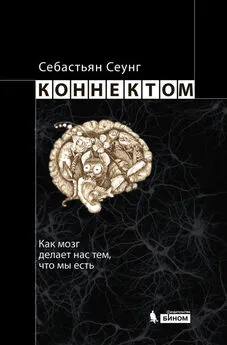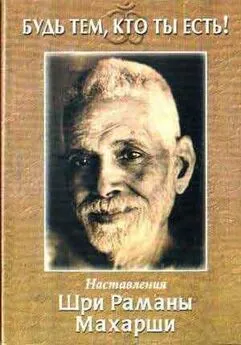Себастьян Сеунг - Коннектом. Как мозг делает нас тем, что мы есть
- Название:Коннектом. Как мозг делает нас тем, что мы есть
- Автор:
- Жанр:
- Издательство:Литагент «БИНОМ. Лаборатория знаний»a493f192-47a0-11e3-b656-0025905a06ea
- Год:2014
- Город:Москва
- ISBN:978-5-9963-2672-3
- Рейтинг:
- Избранное:Добавить в избранное
-
Отзывы:
-
Ваша оценка:
Себастьян Сеунг - Коннектом. Как мозг делает нас тем, что мы есть краткое содержание
Что такое человек? Какую роль в формировании личности играют гены, а какую – процессы, происходящие в нашем мозге? Сегодня ученые считают, что личность и интеллект определяются коннектомом, совокупностью связей между нейронами. Описание коннектома человека – невероятно сложная задача, ее решение станет не менее важным этапом в развитии науки, чем расшифровка генома, недаром в 2009 году Национальный институт здоровья США запустил специальный проект – «Коннектом человека», в котором сегодня участвуют уже ученые многих стран.
В своей книге Себастьян Сеунг, известный американский ученый, профессор компьютерной нейробиологии Массачусетского технологического института, рассказывает о самых последних результатах, полученных на пути изучения коннектома человека, и о том, зачем нам это все нужно.
Коннектом. Как мозг делает нас тем, что мы есть - читать онлайн бесплатно ознакомительный отрывок
Интервал:
Закладка:
82. Dobson, J. 1953. Some eighteenth century experiments in embalming. Journal of the History of Medicine and Allied Sciences , 8 (Oct.): 431.
83. Doupe, A. J., and P. K. Kuhl. 1999. Birdsong and human speech: Common themes and mechanisms. Annual Review of Neuroscienc e, 22 (1): 567–631.
84. Draaisma, D. 2000. Metaphors of memory: A history of ideas about the mind. Cambridge, Eng.: Cambridge University Press.
85. Draganski, B., C. Gaser, V. Busch, G. Schuierer, U. Bogdahn, and A. May. 2004. Neuroplasticity: Changes in grey matter induced by training. Nature , 427 (6972): 311–312.
86. Draganski, B., C. Gaser, G. Kempermann, H. G. Kuhn, J. Wink ler, C. Buchel, and A. May. 2006. Temporal and spatial dynam ics of brain structure changes during extensive learning. Journal of Neuroscience , 26 (23): 6314.
87. Drexler, K. E. 1986. Engines of creation: The coming era of nano technology. New York: Anchor.
88. Dronkers, N. F., O. Plaisant, M. T. Iba-Zizen, and E. A. Cabanis. 2007. Paul Broca’s historic cases: High resolution MR imaging of the brains of Leborgne and Lelong. Brain , 130 (5): 1432.
89. Dudley, R. 2008. Suicide claims two men who shared one heart. islandpacket.com. Apr. 5.
90. Eccles, J. C. 1965. Possible ways in which synaptic mechanisms participate in learning, remembering and forgetting. Anatomy of Memory , 1: 12–87.
91. Eccles, J. C. 1976. From electrical to chemical transmission in the central nervous system. Notes and Records of the Royal Society of London , 30 (2): 219.
92. Eccles, J. C., P. Fatt, and K. Koketsu. 1954. Cholinergic and inhibitory synapses in a pathway from motor-axon collaterals to motoneurones. Journal of Physiology , 126 (3): 524.
93. Edelman, Gerald M. 1987. Neural Darwinism: The theory of neuronal group selection. New York: Basic Books.
94. Eichenbaum, H. 2000. A cortical-hippocampal system for declarative memory. Nature Reviews Neuroscience , 1 (1): 41–50.
95. Elbert, T., and B. Rockstroh. 2004. Reorganization of human cerebral cortex: The range of changes following use and injury. Neuroscientist , 10 (2): 129.
96. Elbert, T., C. Pantev, C. Wienbruch, B. Rockstroh, and E. Taub. 1995. Increased cortical representation of the fingers of the left hand in string players. Science , 270 (5234): 305.
97. Eling, P., ed. 1994. Reader in the history of aphasia: From Franz Gall to Norman Geschwind . Amsterdam: John Benjamins.
98. Epsztein, J., M. Brecht, and A. K. Lee. 2011. Intracellular determinants of hippocampal CA place and silent cell activity in a novel environment. Neuron, 70 (1): 109–120.
99. Euler, T., P. B. Detwiler, and W. Denk. 2002. Directionally selective calcium signals in dendrites of starburst amacrine cells. Nature , 418 (6900): 845–852.
100. Fahy, G. M., B. Wowk, R. Pagotan, A. Chang, J. Phan, B. Thomson, and L. Phan. 2009. Physical and biological aspects of renal vitrification. Organogenesis , 5 (3): 167.
101. Fee, M. S., A. A. Kozhevnikov, and R. H. Hahnloser. 2004. Neural mechanisms of vocal sequence generation in the songbird. Annals of the New York Academy of Sciences , 1016: 153.
102. Fehér, O., H. Wang, S. Saar, P. P. Mitra, and O. Tchernichovski. 2009. De novo establishment of wild-type song culture in the zebra finch. Nature , 459 (7246): 564–568.
103. Felleman, D. J., and D. C. Van Essen. 1991. Distributed hier archical processing in the primate cerebral cortex. Cerebral Cortex , 1 (1): 1.
104. Fiala, J. C. 2005. Reconstruct: A free editor for serial section microscopy. Journal of Microscopy , 218 (1): 52–61.
105. Fields, R. D. 2009. The other brain . New York: Simon & Schuster.
106. Fiete, I. R., W. Senn, C. Z. H. Wang, and R. H. R. Hahnloser. 2010. Spike-time-dependent plasticity and heterosynaptic competition organize networks to produce long scale-free sequences of neural activity. Neuron, 65 (4): 563–576.
107. Finger, S. 2005. Minds behind the brain: A history of the pion eers and their discoveries . New York: Oxford University Press.
108. Finger, S., and M. P. Hustwit. 2003. Five early accounts of phantom limb in context: Pare, Descartes, Lemos, Bell, and Mit chell. Neurosurgery , 52 (3): 675.
109. Flatt, A. E. 2005. Webbed fingers. Proceedings ( Baylor Univ ersity Medical Center ), 18 (1): 26.
110. Flechsig, P. 1901. Developmental (myelogenetic) localisation of the cerebral cortex in the human subject. Lancet , 158 (4077): 1027–1030.
111. Fombonne, E. 2009. Epidemiology of pervasive developmental disorders. Pediatric Research , 65 (6): 591–598.
112. Ford, B. J. 1985. Single lens: The story of the simple microscope. New York: Harper & Row.
113. Friederici, A. D. 2009. Pathways to language: Fiber tracts in the human brain. Trends in Cognitive Sciences , 13 (4): 175–181.
114. Friston, K. J. 1998. The disconnection hypothesis. Schizo phrenia Research , 30 (2): 115–125.
115. Frith, U. 1993. Autism. Scientific American, 268 (6): 108–114.
116. Frith, U. 2008. Autism: A very short introduction. New York: Oxford University Press.
117. Frost, D. O., D. Boire, G. Gingras, and M. Ptito. 2000. Surgically created neural pathways mediate visual pattern discrimination. Proceedings of the National Academy of Sciences , 97 (20): 11068.
118. Fukuchi-Shimogori, T., and E. A. Grove. 2001. Neocortex patter ning by the secreted signaling molecule FGF8. Science , 294 (5544): 1071.
119. Fukunaga, T., M. Miyatani, M. Tachi, M. Kouzaki, Y. Kawaka mi, and H. Kanehisa. 2001. Muscle volume is a major de terminant of joint torque in humans. Acta Physiologica Scand inavica , 172 (4): 249–255.
120. Gall, F. J. 1835. On the functions of the brain and of each of its parts: With observations on the possibility of determining the instincts, propensities, and talents, or the moral and intellectual dispositions of men and animals, by the configuration of the brain and head. Trans. W. Lewis. Boston: Marsh, Capen & Lyon.
121. Galton, F. 1889. On head growth in students at the University of Cambridge. Journal of Anthropological Institute of Great Britain and Ireland , 18: 155–156.
122. Galton, F. 1908. Memories of my life. London: Methuen.
123. Gaser, C., and G. Schlaug. 2003. Brain structures differ between musicians and non-musicians. Journal of Neuroscience , 23 (27): 9240.
124. Gelbard-Sagiv, H., R. Mukamel, M. Harel, R. Malach, and I. Fried. 2008. Internally generated reactivation of single neurons in human hippocampus during free recall. Science , 322 (5898): 96.
125. Geschwind, D. H., and P. Levitt. 2007. Autism spectrum disorders: Developmental disconnection syndromes. Current Opinion in Neurobiology , 17 (1): 103–111.
126. Geschwind, N. 1965a. Disconnexion syndromes in animals and man, i. Brain , 88 (2): 237–294.
127. Geschwind, N. 1965b. Disconnexion syndromes in animals and man, ii. Brain , 88 (3): 585–644.
128. Gilbert, M., R. Busund, A. Skagseth, P. Å. Nilsen, and J. P. Solbø. 2000. Resuscitation from accidental hypothermia of 137 °C with circulatory arrest. Lancet , 355 (9201): 375–376.
129. Glahn, D. C., J. D. Ragland, A. Abramoff, J. Barrett, A. R. Laird, C. E. Bearden, and D. I. Velligan. 2005. Beyond hypof rontality: A quantitative meta-analysis of functional neuroimaging studies of working memory in schizophrenia. Human Brain Mapping , 25 (1): 60–69.
130. Gould, E., A. J. Reeves, M. S. A. Graziano, and C. G. Gross. 1999. Neurogenesis in the neocortex of adult primates. Science , 286 (5439): 548–552.
131. Greenough, W. T., J. E. Black, and C. S. Wallace. 1987. Experience and brain development. Child Development , 58 (3): 539–559.
132. Gross, C. G. 2000. Neurogenesis in the adult brain: Death of a dogma. Nature Reviews Neuroscience , 1 (1): 67–73.
133. Gross, C. G. 2002. Genealogy of the “grandmother cell”. Neuroscientist , 8 (5): 512.
134. Guerrini, R., and E. Parrini. 2010. Neuronal migration disorders. Neurobiology of Disease , 38 (2): 154–166.
135. Guillery, R. W. 2005. Observations of synaptic structures: Origins of the neuron doctrine and its current status. Philo so phical Transactions B , 360 (1458): 1281.
136. Hahnloser, R. H. R., A. A. Kozhevnikov, and M. S. Fee. 2002. An ultra-sparse code underlies the generation of neural seq uences in a songbird. Nature , 419 (6902): 65–70.
137. Hajszan, T., N. J. MacLusky, and C. Leranth. 2005. Short-term treatment with the antidepressant fluoxetine trigg ers pyramidal dendritic spine synapse formation in rat hippo cam pus. European Journal of Neuroscience , 21 (5): 1299–1303.
138. Hall, D. H., and Z. F. Altun. 2008. C. elegans atlas. Cold Spring Harbor, N.Y.: Cold Spring Harbor Laboratory Press.
139. Hall, D. H., and R. L. Russell. 1991. The posterior nervous system of the nematode Caenorhabditis elegans : Serial rec onstruct ion of identified neurons and complete pattern of synaptic interactions. Journal of Neuroscience , 11 (1): 1.
140. Hallmayer, J., S. Cleveland, A. Torres, J. Phillips, B. Cohen, T. Torigoe, J. Miller, A. Fedele, J. Collins, K. Smith, et al. 2011. Genetic heritability and shared environmental factors among twin pairs with autism. Archives of General Psychiatry. doi: 10.1001/archgenpsychiatry.2011.76
141. Harris, J. C. 2003. Pinel orders the chains removed from the insane at Bicêtre. Archives of General Psychiatry , 60 (5): 442.
142. Häusser, M., N. Spruston, and G. J. Stuart. 2000. Diversity and dynamics of dendritic signaling. Science , 290 (5492): 739.
143. He, H. Y., W. Hodos, and E. M. Quinlan. 2006. Visual de privation reactivates rapid ocular dominance plasticity in adult visual cortex. Journal of Neuroscience, 26 (11): 2951–2955.
144. Hebb, D. O. 1949. The organization of behavior: A neuropsychological theory . New York: Wiley.
145. Hell, S. W. 2007. Far-field optical nanoscopy. Science , 316 (5828): 1153–1158.
146. Helmstaedter, M., K. L. Briggman, and W. Denk. 2008. 3D structural imaging of the brain with photons and electrons. Current Opinion in Neurobiology, 18 (6): 633–641.
147. Helmstaedter, M., K. L. Briggman, and W. Denk. High-accuracy neurite reconstruction for high-throughput neuroanatomy. Nature Neuroscience , 14 (8): 1081–1088.
148. Hickok, G., and D. Poeppel. 2007. The cortical organization of speech processing. Nature Reviews Neuroscience , 8 (5): 393–402.
149. Hopfield, J. J. 1982. Neural networks and physical systems with emergent collective computational abilities. Proceedings of the National Academy of Sciences , 79 (8): 2554.
150. Hopfield, J. J., and D. W. Tank. 1986. Computing with neural circuits: A model. Science , 233 (4764): 625.
151. Howland, D. 1996. Borders of Chinese civilization: Geography and history at empire’s end . Durham, N. C.: Duke University Press.
152. Hutchinson, S., L. H. L. Lee, N. Gaab, and G. Schlaug. 2003. Cerebellar volume of musicians. Cerebral Cortex , 13 (9): 943.
153. Huttenlocher, P. R. 1990. Morphometric study of human cerebral cortex development. Neuropsychologia , 28 (6): 517.
154. Huttenlocher, P. R., and A. S. Dabholkar. 1997. Regional differences in synaptogenesis in human cerebral cortex. Journal of Comparative Neurology , 387 (2): 167–178.
Читать дальшеИнтервал:
Закладка:


![Рейчел Херц - Почему мы едим то, что едим [Наука о том, как наш мозг диктует нам, что есть]](/books/1061252/rejchel-herc-pochemu-my-edim-to-chto-edim-nauka-o-t.webp)
![Алан Джасанов - Мозг: прошлое и будущее [Что делает нас теми, кто мы есть]](/books/1070785/alan-dzhasanov-mozg-proshloe-i-buduchee-chto-delaet.webp)






